(Source: Nuts and Volts)
In 1935, the Zenith Radio Corporation produced a stunning radio receiver called the Stratosphere model 1000Z. The set used 25 tubes and three loudspeakers — more than any other radio to date. An amazing (for the time) 50 watts drove its three speakers — one 6 inch dynamic high-frequency and two 12 inch dynamic low-frequency speakers.
Standing 50-1/2 inches tall, the Stratosphere sold for $750.00 — more than many automobiles; in comparison, a new Ford cost $652.00. At that price, it’s no wonder that only about 350 sets were produced during the four years that the Stratosphere was offered.
This achievement impressed Powel Crosley, Jr. — the President of the Crosley Radio Corporation — who praised it as a fine example of quality in radio construction, but it used “only” 25 tubes and three speakers! Crosley — who also owned the 500,000 watt powerhouse radio station, WLW — was inspired to surpass Zenith by bringing the world the largest and most powerful radio receiver yet known.
[…]Out of the numerous [engineering conferences were held throughout the winter months] and Crosley’s imagination came the basic specifications: the radio would be a superheterodyne receiver with no fewer than 30 tubes, six loudspeakers, four chassis; a suitably impressive cabinet would house it. More intricate than any set ever built, it would naturally have the highest possible quality and richness of tone.
[…]In its completed form, the WLW Model Super-Power Radio Receiver indeed surpassed the Zenith Stratosphere model. It had 37 tubes, six speakers, and 75 watts of power. The cabinet stood 58 inches tall, 42 inches wide, and 22 inches deep. Everything inside the cabinet that could be was chromium-plated. The transformer coils, tubes, and speaker frames were finished in black and each chassis had its own serial number plate.
Continue reading the full article at Nuts and Volts…
Regular SWLing Post readers know that I’m a bit of a vintage radio nut, so I thought I’d do a little digging to see if any WLW Model Super-Power Radio Receivers had been sold or auctioned recently. I was curious what sort of price they’d fetch.
Let’s just say, some owners demand a high price…
This unit was put up for sale on eBay for $160,000 US last year! While I know the Crosley WLW receiver is rare, that price was obviously over the top as is wasn’t sold. Still, the seller included some great photos of this near-mint model:
Around the time of the Zenith Stratosphere and the Crosley WLW–the mid to late 30s–radio manufacturers must have either believed there was a market for these high-end, high-fidelity receivers, or they simply enjoyed designing and manufacturing them as a company benchmark or showpiece.
While not as feature-packed as the Crosley WLW receiver, at the National Capital Radio and Television museum last year, I was completely enamored with this gorgeous powerhouse console: the E.H. Scott All-Wave 23 console.
The docent told me that the E.H. Scott All-Wave 23 console could easily fill a banquet hall with hi-fi audio. It sported 23 tubes and a very large speaker. If memory serves, it originally sold for $750–easily three or four times the price of most console radios.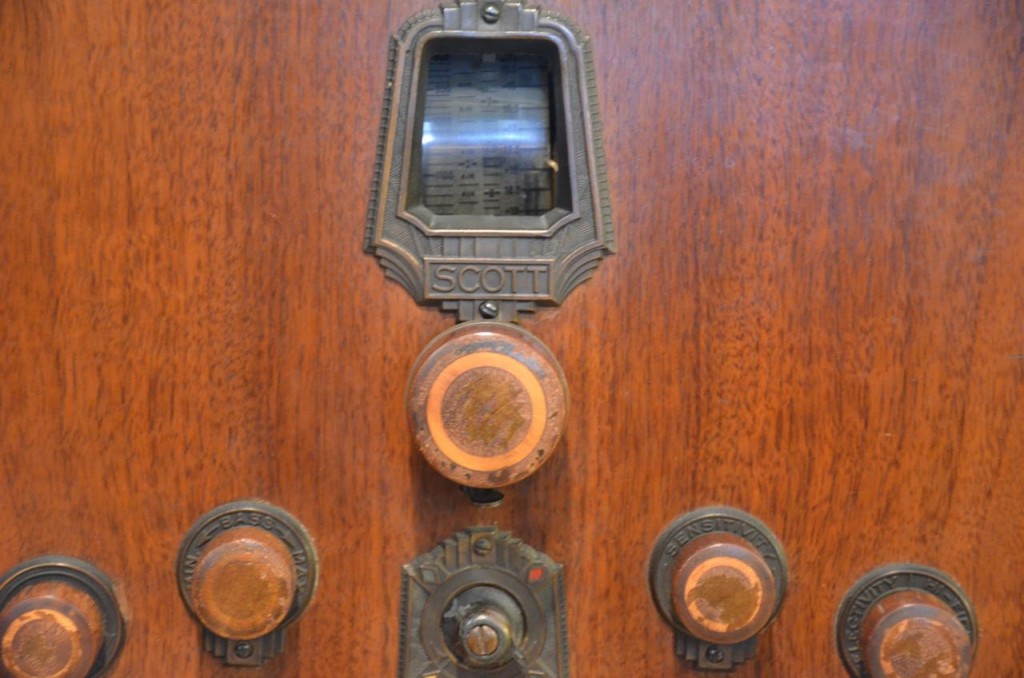
Post readers: Do you know of any other benchmark console radios? Do you own one of these amazing receivers? Please comment!

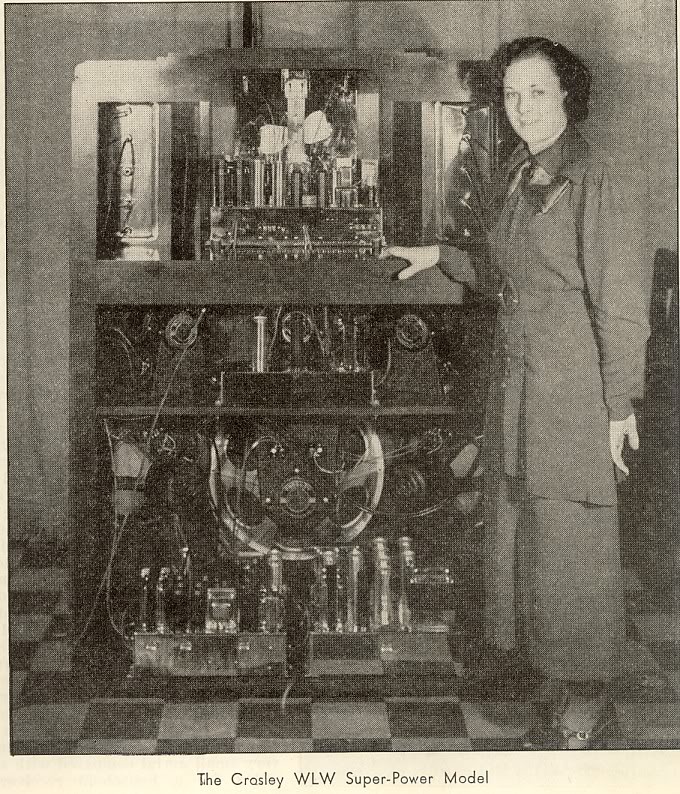
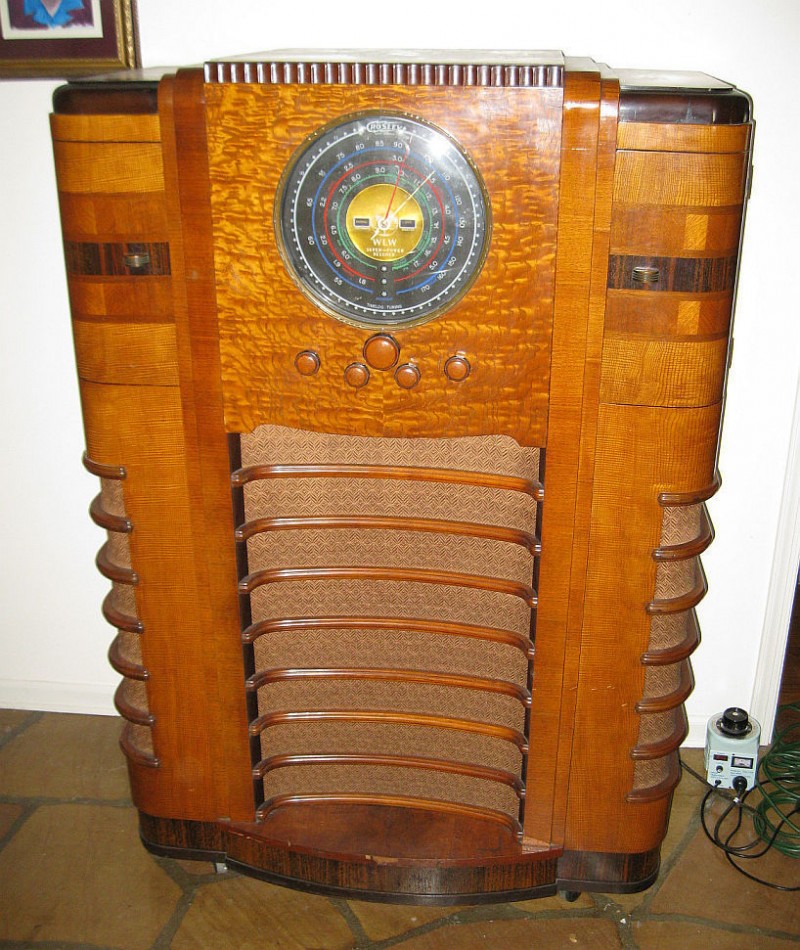
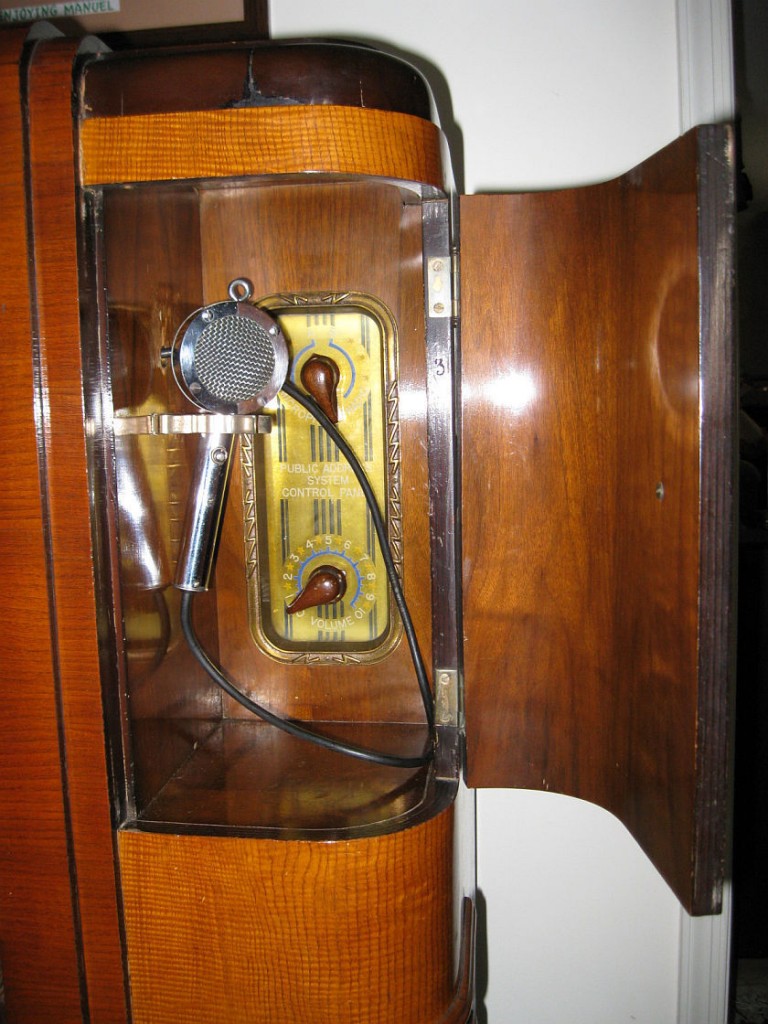
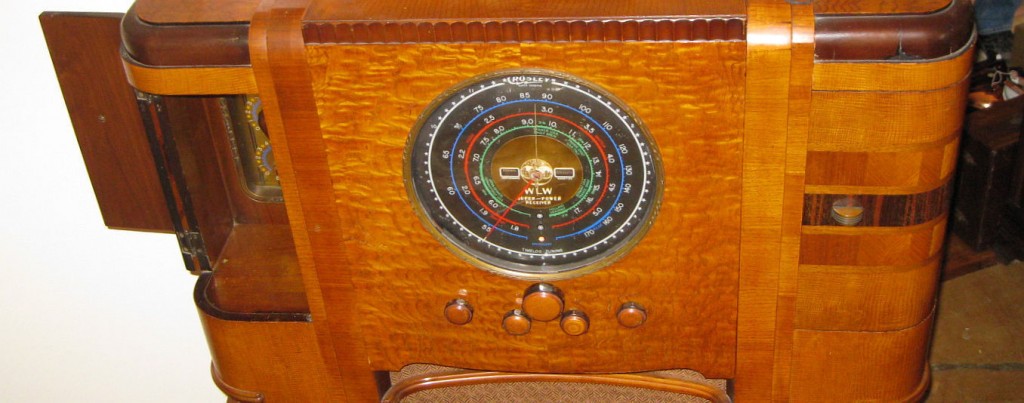
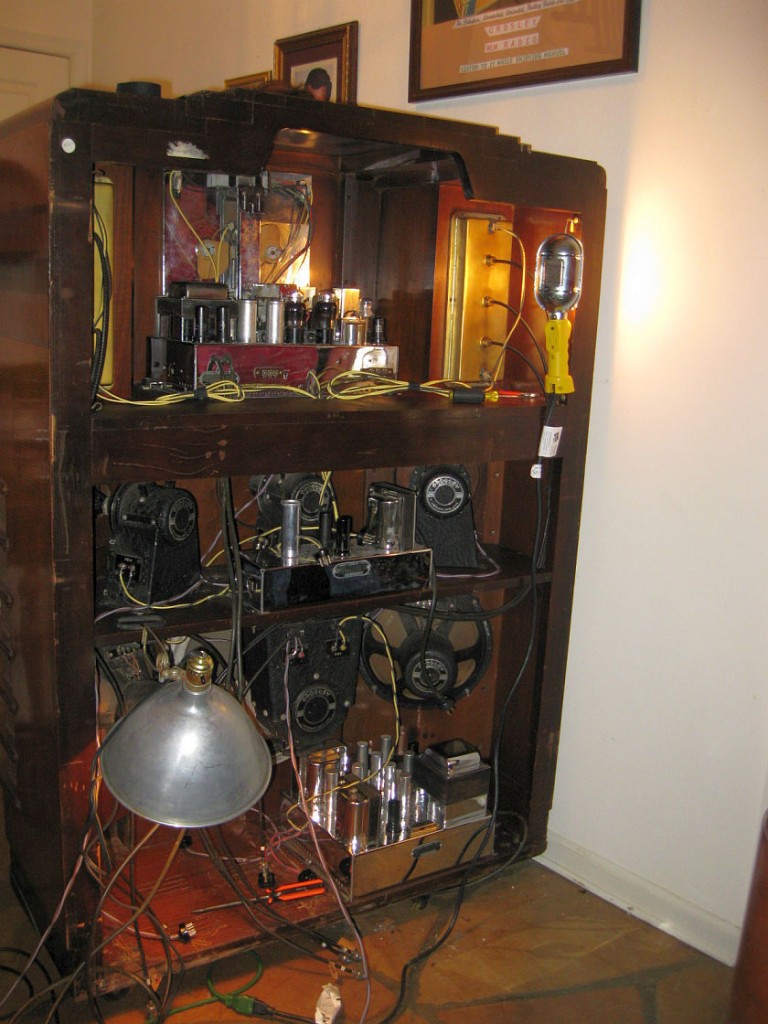
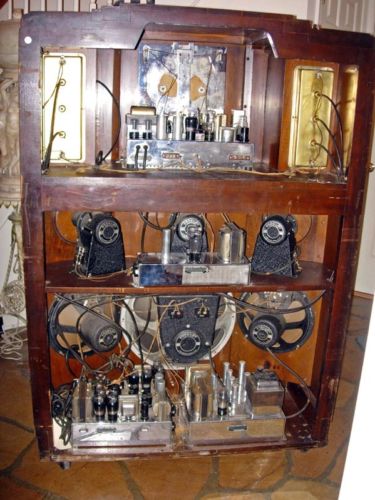
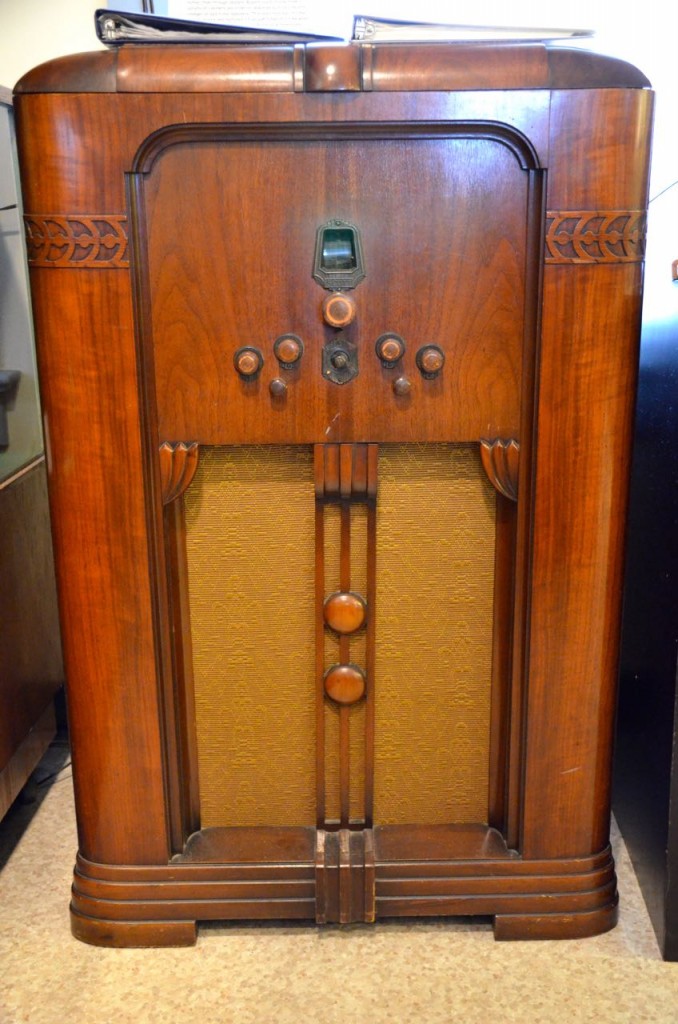
I have one what’s it werth
You actually have one???
I’m not sure if my radio is a ‘benchmak’ but it sure is close to it.
It is the E. H. Scott Philharmonic Beam of Light console radio.
Mine appears to have been built in 1939 or early 1940. It has 30 tubes, most of which are covered by chrome-plated shields. The power supply/amplifier (4 6L6’s in the output stage), receiver, 15″ speaker and cabinet easily weigh over 150 pounds.
It took me two years of occasional work (I am retired so I don’t rush) to get it going and working reasonably well. I had to replace over 100 capacitors and correct some B+ voltage problems left by a previous repair person. When receiving a strong station the volume is such that it would easily drown out anything within 100 yards (and with no distortion).
Some day I will post some details and photos on my WordPress site (idlenot.com). I’ll be sure to let you know, Thomas.
Oh, the first time I powered it up and received a station they were playing Light My Fire (The Doors, I think). Appropriate. I put a video of it on YouTube. The radio is all apart as I was still working on it at the time.
The link: https://www.youtube.com/watch?v=l9zO4eMjNdg
I am an EE student at Oklahoma State (Formerly Oklahoma A&M) The school where the designer of the WLW radio (Amyle Richards) got his BSEE in 1927 (he wrote and submitted a masters thesis on the design of this radio, which earned him a PhD!)
I found a picture of him in the Engineering South building and found him in the 1927 yearbook in the library. (I have two hours between classes) Anyway, the archive department located his paper on the WLW and is scanning it for me.
That sounds brilliant, Larry! If you’re able to share those scans (if they’re in the public domain) I’d love to post them.
I have two good friends who teach at OSU. Brilliant school! Indeed, I’ve done humanitarian work in Belize with the school of education.
Best,
Thomas
Sure! I’ve got the paper now in pdf format. It’s 9Mb.
Brilliant! Can you send it to my email address? It’s: thomas [ at ] swling.com
Cheers,
Thomas
sent! Also sent a picture of Dr Richards from the class of 1927 (Looks a bit like a young Stephen Baldwin)
Would you send me your Amyle Richards PDF on the Crosley WLW?
At last—someone who knows about copyrighted vs. public domain. Thank you, Thomas. The article portions that Larry or whomever copied here are most assuredly NOT PD.
In Germany radio reception was quite restricted: Around 1925 you needed a special permit for anything beyond a detector receiver.
From 1933 the Nazis developed radio as their propaganda medium. They ordered the industry to develop cheap radios (“Volksempfänger”, people receivers, nicknamed “Göbbels-Schnauze” after the Nazi propaganda minister).
Sensitivity was unimportant and later even undesirable. In WW 2 it was a criminal offence to listen to “Feindsender” (enemy transmitters) like the BBC. Therefore German radios of that time look like these: https://www.youtube.com/watch?v=7x5fwXNAN3k
In the early 1950s, when the “Wirtschaftswunder” started, everything changed. Search for “Saba radio” to get an impression.
After the war Germany got very few and quite bad AM channels. This forced us to move to FM very early.